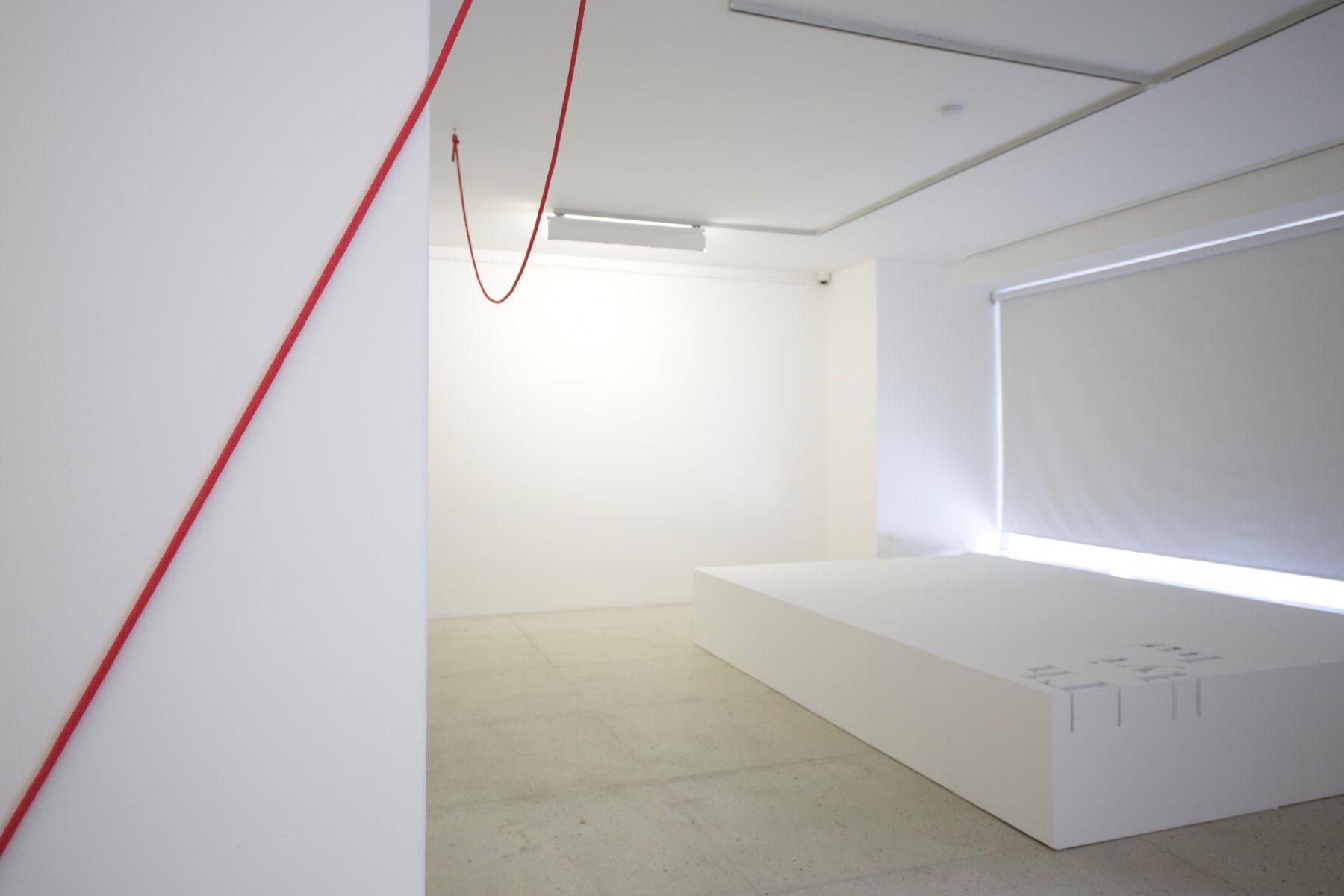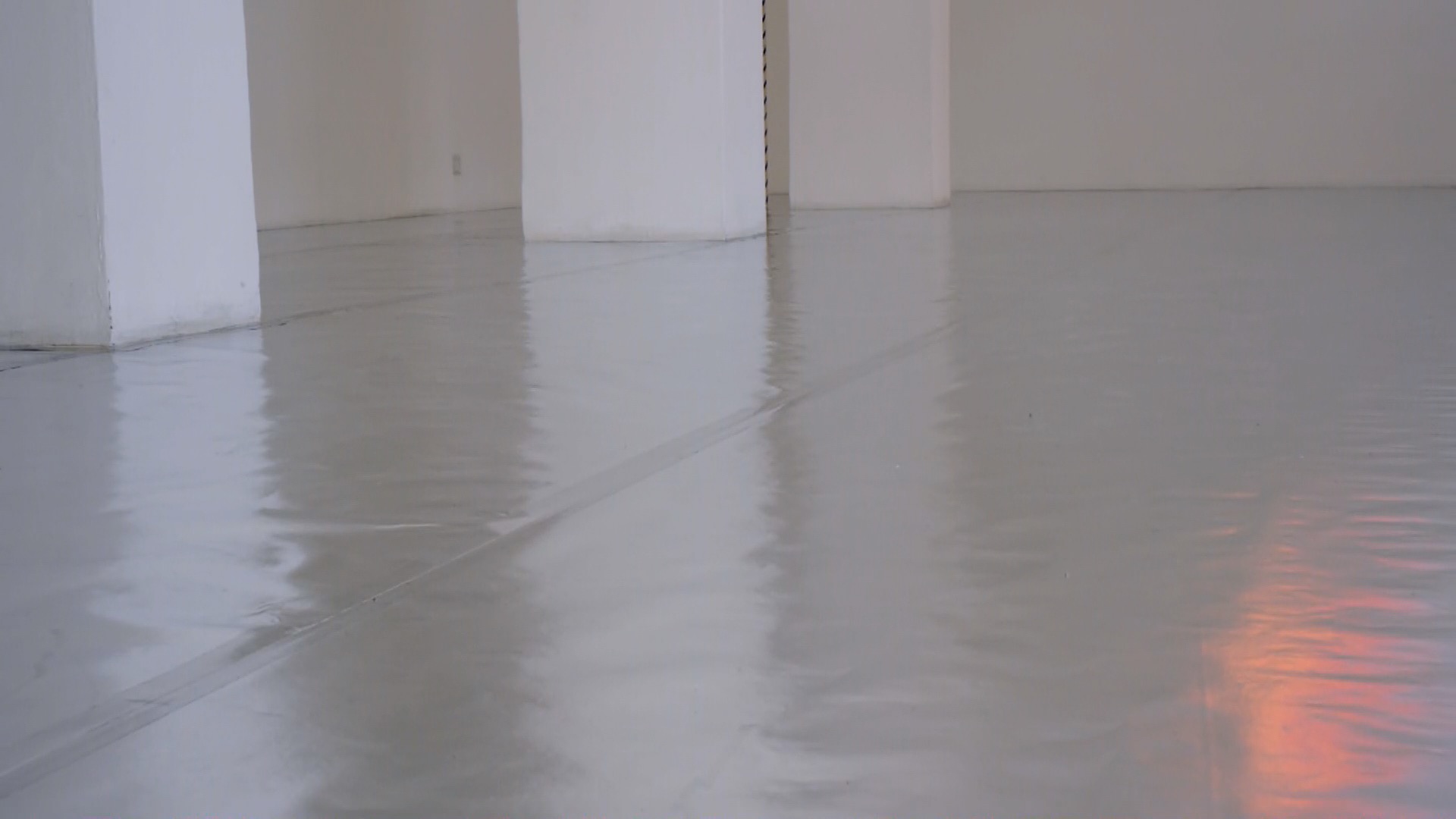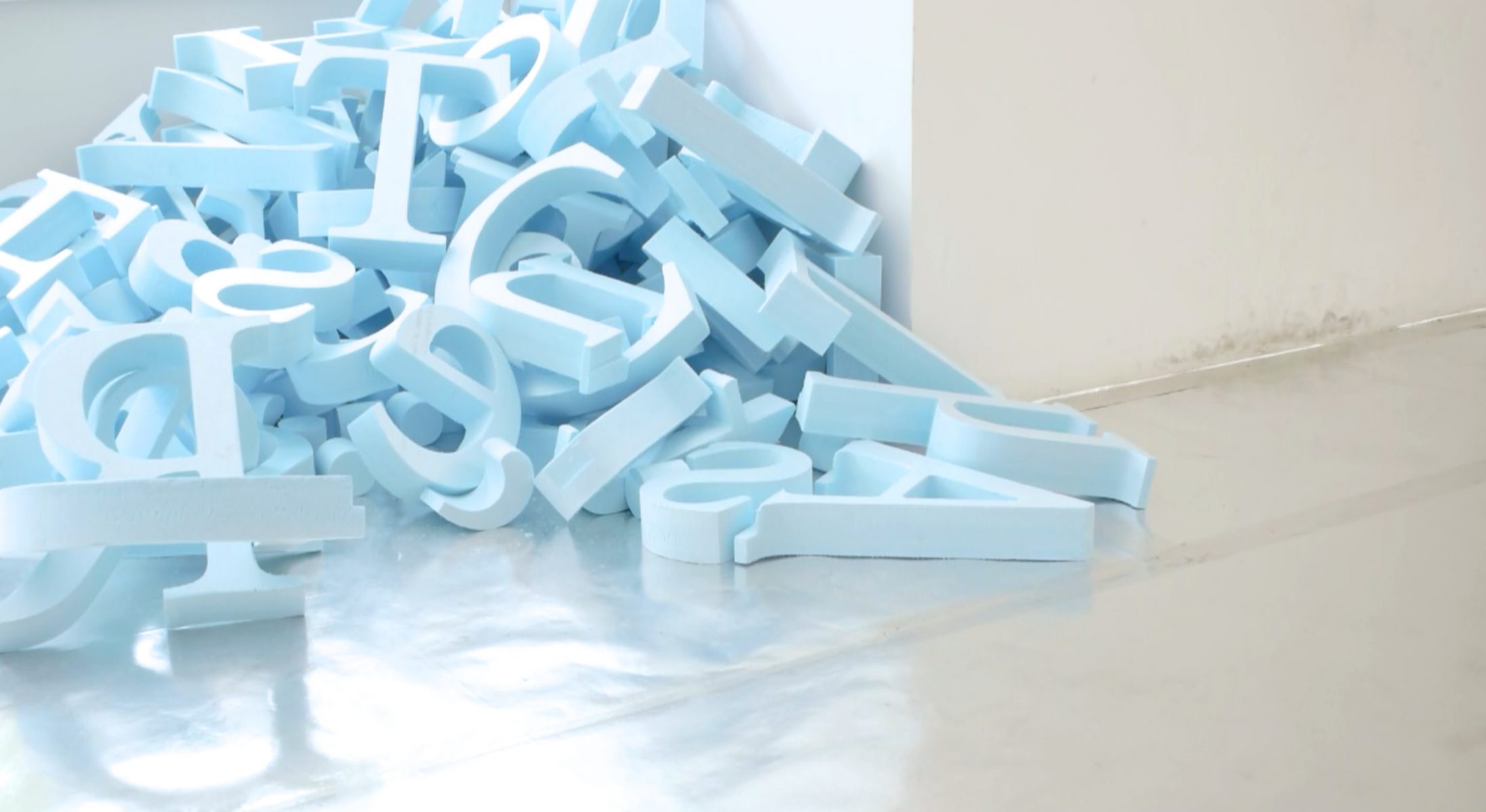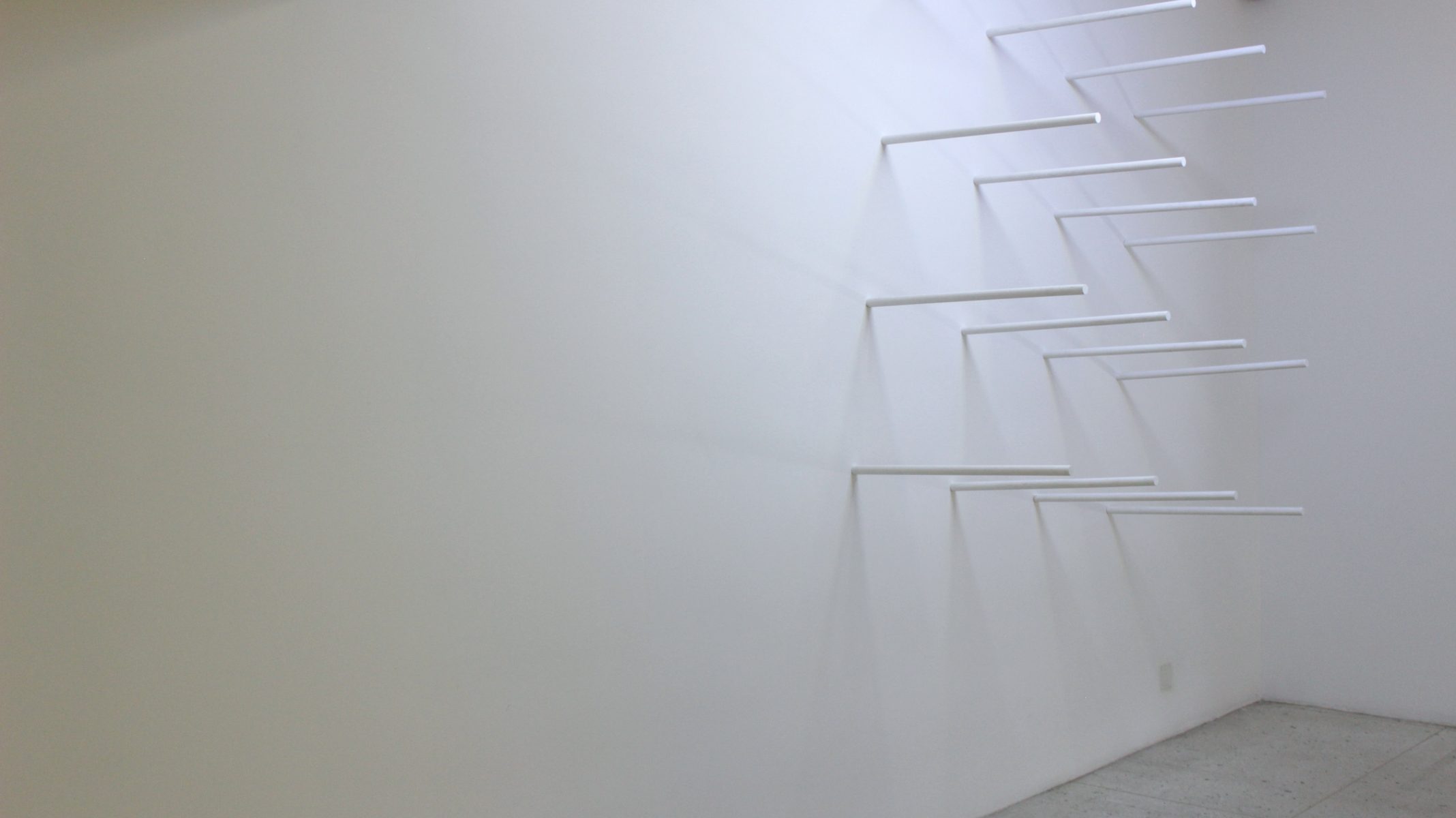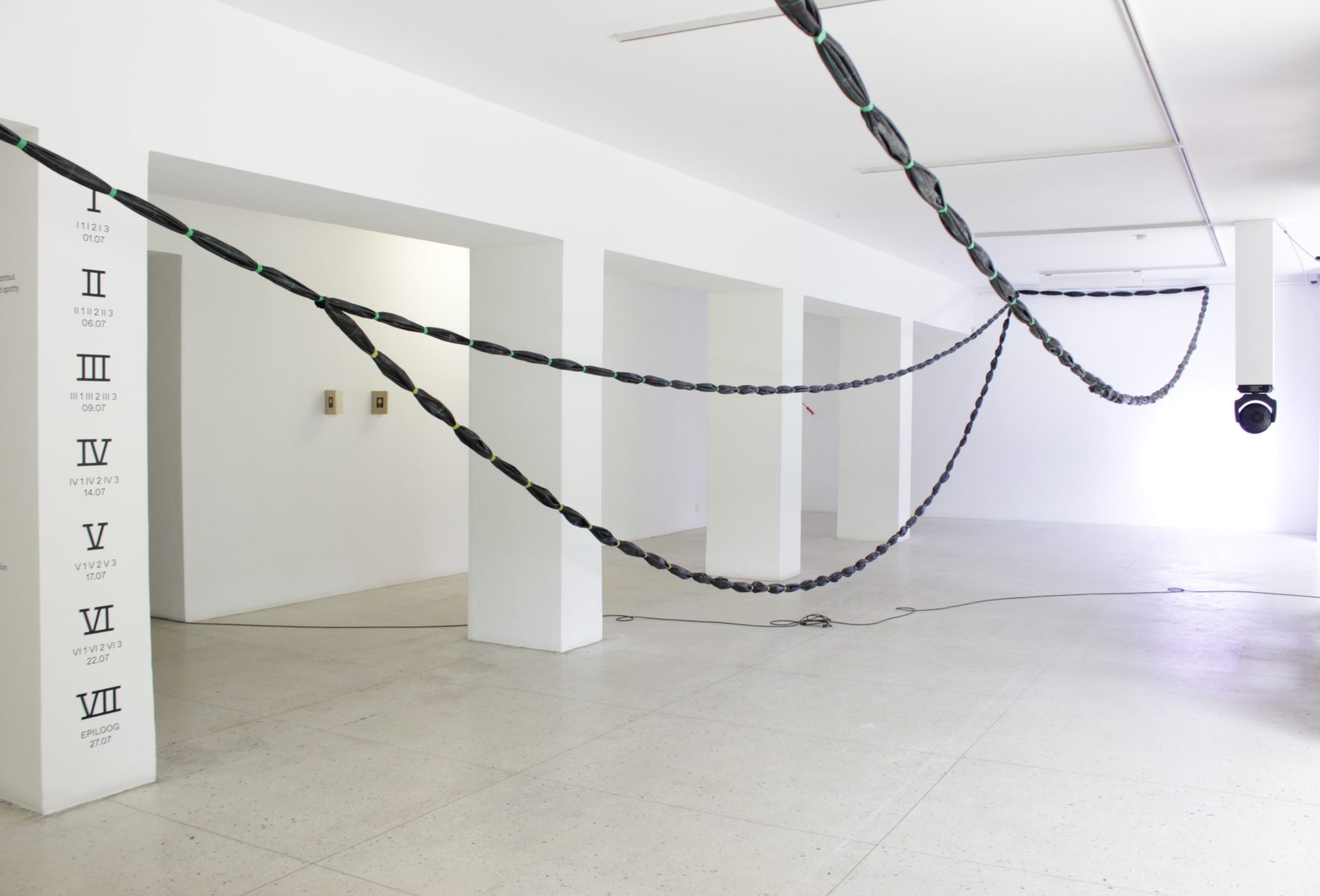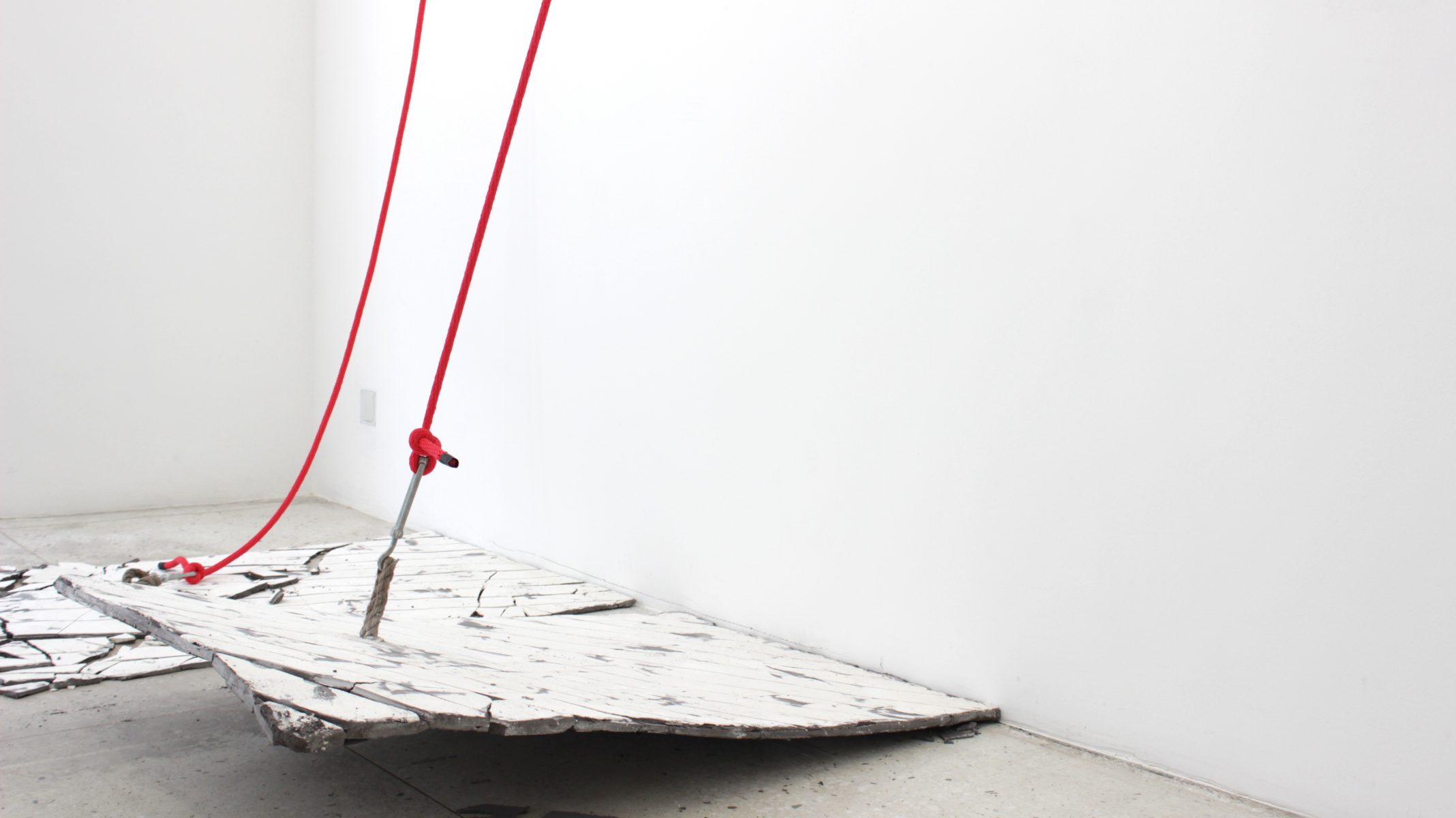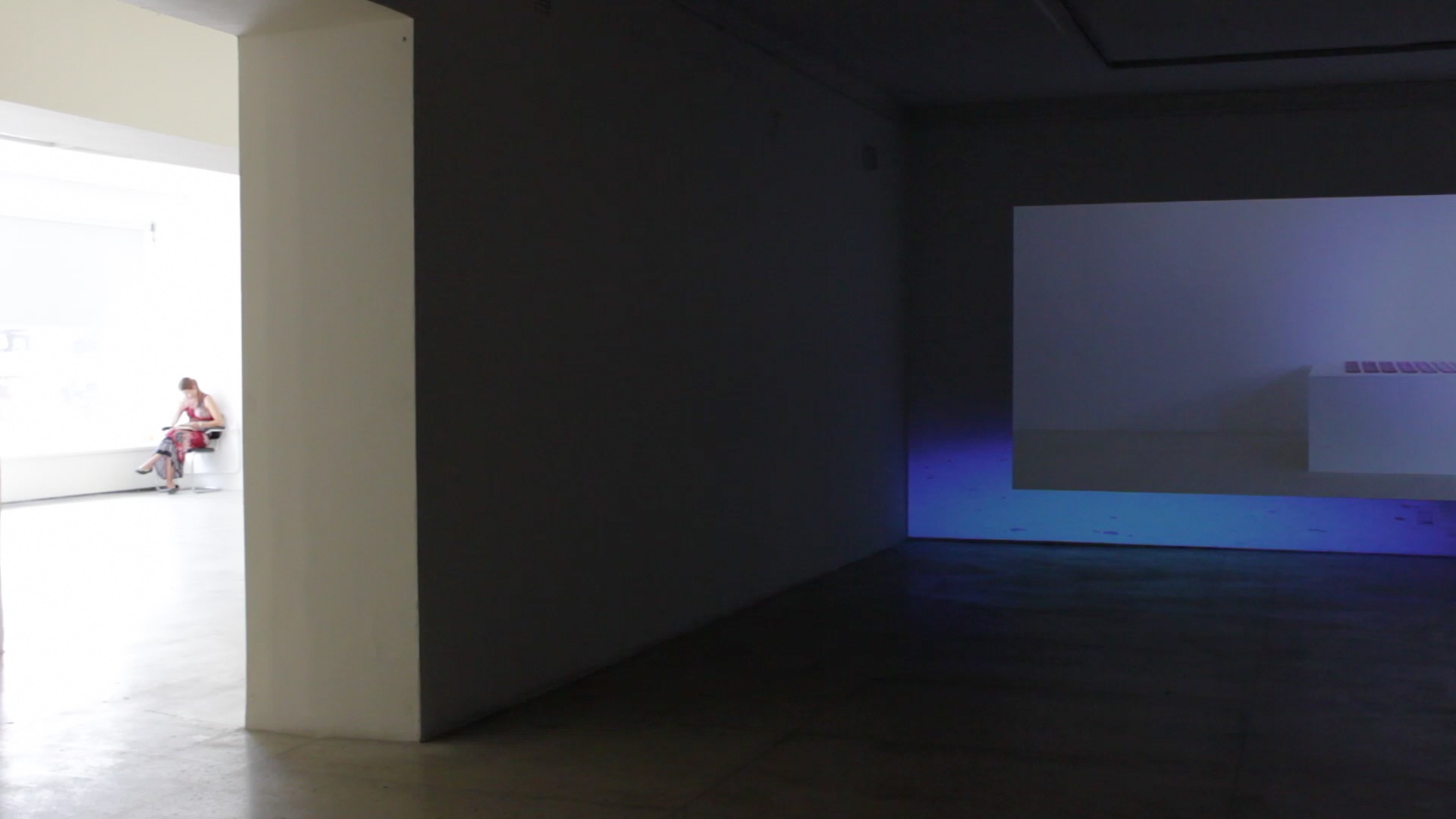Dead End
Mihkel Ilus and Marten Esko
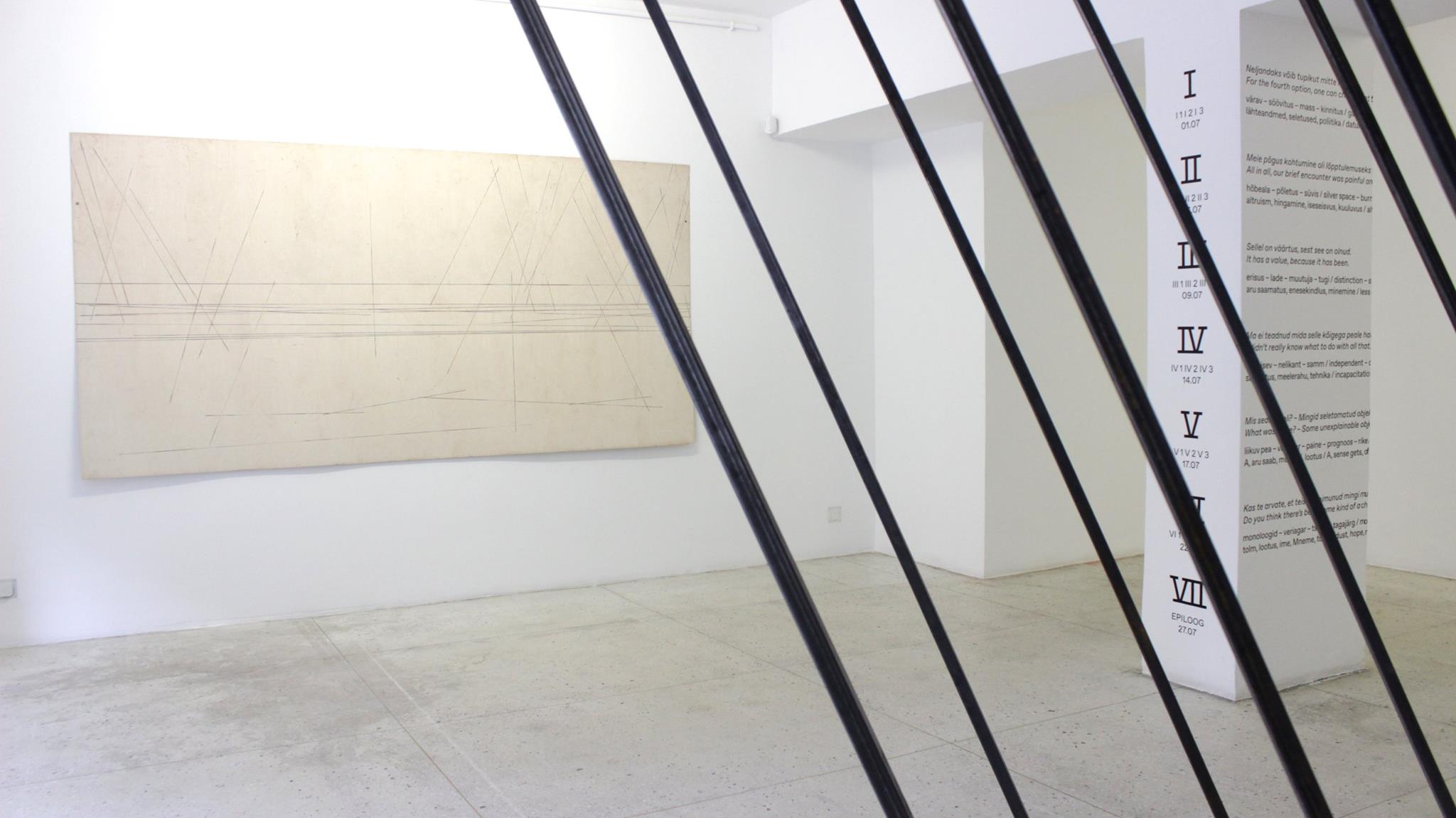
Dead End is a work in progress in six acts and eighteen chapters with a film epilogue. This is an exhibition that is not opened or closed, because its beginning and afterlife occur elsewhere. The viewers are welcome to come to the gallery several times, in order to experience the constant changes – the short existence of the objects, materials and thoughts between their birth and death.
What can we say about an exhibition, the idea of which – an exhibition about the process of making an exhibition, with the artists and participants telling their endless stories without summarising them – was intriguing and open-ended from the start and still is to a great extent? By emphasising the openness of the constantly changing show compared to the completed static ones that are the rule, the initiators shifted the entire area of influence and the duration of the undertaking outside the gallery. But where? If into a dead end, then into a Dead End, which signifies something that it may also not signify. Just like Ilus and Esko, who, relying on each other, cancel out themselves… or vice versa.
By presenting the beauty of engineering thought and the respectable movements of workmen, Mihkel Ilus builds minimalist spatial choreographies, to which he adds dozens of previously prepared designs. Scarcely completed, one installation replaces another and the process starts all over again. This is accompanied by the libretto, which is slowly revealed to the exhibition visitors – a context-free literary work written by Marten Esko comprised of attractive parts. Similarly to Ilus’s installations, the written text from the start conceals the invalidation of its own content, because all that holds this wideranging mosaic together is its framing format. Esko’s synchronised relationship with Ilus could just as well be called “Formulating a Chameleon”: the space is designed, the things have a form, and the only meaning of the association comprised thereof, which is assigned by a person, is constant restless change.
Everything here is ambivalent – soft and solid objects, ones borne by will and the lack of will, a book and a film among them. Everything seems to confirm that the act is important, remaining in contact is important. The question of the reasonability of either is not questioned. The centre that enables convergence has been removed from the memory that creates the connections, only the quotes stand on their own: “If things can be located at extreme points on the vector of right and wrong, why bother. It seems that there’s no sense it taking the idea to a dead end, it’s not art, let it be.” “By the way, Baudelaire has already proposed the addition of two new entries to the list of human rights: the right to contradict oneself and the right to leave” (M. Esko,Dead End VI 3 and IV 3); “Today, we are moving toward confusing everyone and keeping them in this state. Dead End is an attempt to extract some artistic quality from this.” (M. Ilus).
We could let one man in. This man has written the following: Absurd people replicate that which they cannot unite; absurd works illustrate an idea’s abdication of its own importance, its retreat into the role of an initiator of naiveté and portrayer of absurdity. If the world were lucid, there would be no art; it may be that the greatness of a work of art is hidden less in itself than in the challenge presented to it by a person. (Albert Camus, Myth of Sisyphus, 1942).
Dead End is an exhibition that circles back to art, which wants to place art in its time. It seems that does so knowingly, but the opposite is also not precluded.
Exhibition supported by: Estonian Ministry of Cultural Affairs, Cultural Endowment of Estonia
The artists thank: Allan Appelberg, Anneli Juhani, Asso Riisalu, Dénes Farkas, EKA Foto, Epp Õlekõrs, Johannes Säre, Jekaterina Abramova, Kirill Tulin, Tõnis Loorits, Maarika Solovjov, Maarja Tõnisson, Maria Esko, Meinar Mäesalu, Veiko Õunpuu, Valge Kuup.



